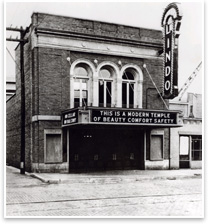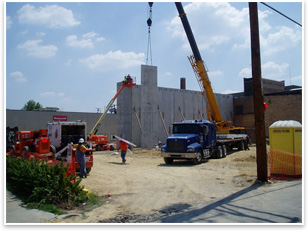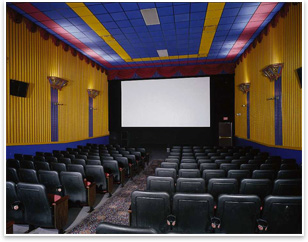
Revamping the Lindo: Breathing New Life into an Old Theater by Cynthia Young
Summary: Willis Johnson has been buying historic movie theaters and restoring them to their former luster in northern Illinois for nearly 30 years. Starting with a renovation of the Tivoli Theatre in Downers Grove, Ill., Johnson is currently expanding the 85-year-old historic Lindo Theatre in Freeport, Ill. He now operates 12 theaters encompassing modern and historic venues in 11 towns across the state. When Willis Johnson bought the historic Lindo Theatre more than two decades ago, the theater had been closed for a year, the roof leaked, and the boiler had failed. Inside, the lobby featured paneling in “early rec room” decor, a dropped ceiling, and carpet glued to the terrazzo floor. “We didn’t know what we had gotten into,” says Johnson of Classic Cinemas, a family-owned company he runs with his wife Shirley and son Chris based in Downers Grove, Ill. But under the layers the Johnson family discovered a gem. “After investigating, we found a 14-foot-high ceiling with a heavy plaster cornice with cherubs and lots of detail that was 18 inches high,” says Johnson, who has been buying and renovating historic movie theaters in northern Illinois for nearly 30 years. They fixed the roof, stripped off the paneling, built three auditoriums inside the original, and were in business.
The expansion project includes a reproduction of the original vertical sign on the outside of the theater and, inside, period wall sconces, cornice moldings and plaster in keeping with the original design, and original stained glass exit signs. “We paid 200 movie passes to get a couple of the stained glass signs back and are reproducing more as well,” adds Johnson. Johnson tries to stay true to the theater’s classic, original style and construct the additions in the same manner; yet he is also practical. “We do what we can afford. We don’t do a full restoration or return it to exactly the way it was. It’s a restoration that opens the theater and keeps the theater in operation. It’s contributing to the community instead of being closed and helps to revitalize downtown.”
“All of his theaters have something in common,” says architect Kevin Peterson, of K. Peterson and Associates, Naperville, Ill. “They are usually older theaters in a downtown environment, and with older buildings, there are many constraints you have to work around.” One challenge at the Lindo was creating wider auditoriums. “The original rooms were long, deep, and narrow. We are splitting these three auditoriums into two for a more comfortable proportion of rooms,” says Peterson, who has helped renovate other historic theaters for Classic Cinemas. Another issue was tying the new addition into the existing building. “It is always a challenge working with the auditoriums’ different slopes, the grades at the top of the theater, and the grades that you need to exit the building,” Peterson says. The Johnson family’s first purchase, the Tivoli Theatre, remains a thriving enterprise and celebrates its 80th anniversary in 2008. This year, AIA Illinois named the Tivoli one of the most historic sites in the state. |
||
Copyright 2007 The American Institute of Architects. All rights reserved. Home Page |
||


 Fitting the original
Fitting the original From the heyday of grand houses
From the heyday of grand houses